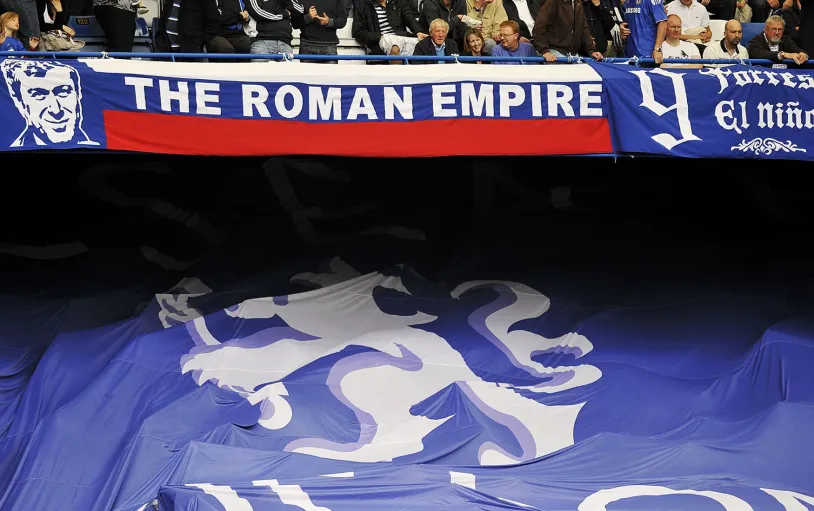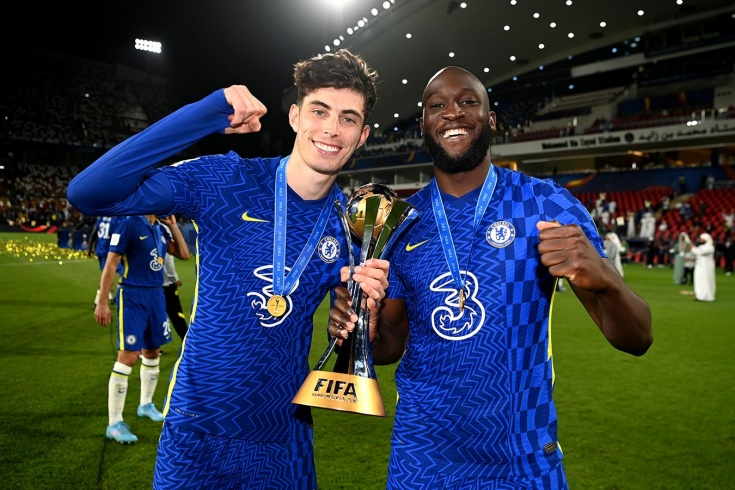London Success: How Roman Abramovich Changed Chelsea in 15 Years
Business
In July 2003, the Russian billionaire bought the English Premier League mid-table, now Chelsea is a European top club

In 2003, Russian oligarch Roman Abramovich’s purchase of Chelsea #17 of London from Ken Bates seemed like a rich man’s experiment with his money. No one could have predicted what would come of it. But now it is clear: this purchase was historic not only for the club, but for the entire Premier League.
Before Abramovich, Chelsea was a mid-table club with chronic financial problems. Bates himself (a professional soccer manager) bought it from the previous owner Brian Mirza for a token £1. At the time Chelsea had debts of several million pounds – at that time a huge amount of money, the club was even banned from registering players. Mears got rich on the fact that he decided to rebuild Stamford Bridge, making the arena the first fully seated stadium in the country. But the results collapsed and soccer hooliganism flourished. Spectators were getting smaller and smaller, especially since the team was playing in the second division.
Bates brought the team back to the elite, but did little to change the perception of Chelsea. The best result was third place in the 1998/99 season. Not bad players like Gianfranco Zola, Marcel Desailly and Gustavo Poyet, the playing coach Gianluca Vialli – perhaps the only squad between the 1955 title and the Abramovich era that could fight for the championship.
The wily fox Bates participated in the creation of the Premier League, tried to raise the results by mass importation of legionnaires, but gradually realized that nothing much would work out for him. Interest from the side Abramovich turned out to be his lucky ticket: Chelsea had almost £100 million of debt, by the standards of 15 years ago – a serious amount. But the Russian businessman solved these problems and also paid about £140m for the club. Plus he allocated another £120m to sign 14 new players!
Reaching the next level
“Chelsea have become radically different. The club transformed itself and the league. The only three teams to win the league title between 1993 and 2003 were a wild Blackburn in 1995, Arsenal and Manchester United. “Chelsea became a third force, and a very powerful one at that.
One by one, top footballers turned up at Stamford Bridge. And then – the top coach Jose Mourinho, who replaced Claudio Ranieri in 2004. Whatever the Portuguese may say, it was his career at Chelsea that made him truly special. Before Abramovich, not every player wanted to be associated with Chelsea. After that, almost everyone dreamed of, or at least considered the possibility.
There was much talk about Roman Arkadyevich, who had just begun to run the club: they said he did not fully understand soccer and was just throwing money down the drain. But the results say otherwise: it took Abramovich only two seasons to become champion of England.
Frank Lampard, John Terry, Joe Cole, Didier Drogba, Petr Cech, Michael Ballack, Michael Essien, Arjen Robben, Juan Sebastian Veron, Hernan Crespo – the Chelsea squad was rightly envied by many. After all, even Abramovich’s failures looked like the dreams of others. Take, for example, the transfer of European Golden Ball winner Andriy Shevchenko, for whom the move to London was the beginning of the end. Well, 14 coaching layoffs in 15 years is also a bit much.
Nevertheless, there is no denying it: Abramovich has succeeded in terms of sport. Chelsea have won the Premier League five times in “his” 15 years. Manchester United have won the same number of times. Manchester City have three, Arsenal and Leicester have one each. Even though the competition in the league is only increasing every year, Chelsea manage to cope. It is Abramovich’s team – the most titled English club for this fifteen-year period (17 trophies).
The long-awaited victory in the Champions League (and there was also a penalty shoot-out loss in Moscow in 2008) is the most powerful proof of the club’s strength.
A global brand
During these 15 years the managerial style of Abramovich has changed. The starting five years were under the sign of the big money. Chelsea had a strong image of a club that is ready to pay as much as it takes. Such extravagance was often ridiculed.
But over time, the club has seriously optimized spending in the transfer market. The last two titles can be called quite budgetary. “Chelsea abandoned the wholesale purchase of established stars and began to pay more attention to the young. However, they have not always adapted: surprisingly, three Premier League superstars from the 2017/18 season – Mohamed Salah, Kevin De Bruyne and Romelu Lukaku – did not play for Chelsea at the time.
Nevertheless, the number of titles convinces: Abramovich’s club is much more likely to hit than miss. The victories have allowed Chelsea to become an instant global brand by soccer standards, surpassing historically strong clubs. According to a massive 2015 study by Twitter, Chelsea is by far the most popular Premier League club in important markets such as Brazil, Mexico, Turkey and Spain. As it turns out, it is the Blues, not Manchester United, that are favored in South America and almost every country on the Isthmus of Latin America. “Chelsea is the number one English club in Saudi Arabia, Kazakhstan, Cameroon, Ghana, Italy, Belgium, the Czech Republic, Slovakia and Romania. By the way, according to figures from the same study, it is Abramovich’s club that is the most popular English Premier League club in Russia (followed by Arsenal).
“Chelsea coped with a task that was beyond the power of, for example, Ajax, Benfica or Anderlecht, the honored but forgotten heroes of Europe. And now it is the global aspect that is one of the main drivers of profit growth. The club’s shirt and sleeve sponsor right now is the Japanese firm Yokohama Tires. In Japan, Chelsea is in the top three in terms of popularity. This is helped not only by victories, but also by regular pre-season tours of Asia.
Infrastructure changes
In 2007, the club opened one of the best training centers in the world. Thirty soccer fields, an ultramodern gym, a medical center, residential buildings for the first team, the women’s team, the club academy – and all in one place in Kobham. Young people have the opportunity to watch and be inspired by the superstars on a daily basis. The club academy has also moved to a new level of results – the first pupils like 22-year-old Reuben Loftus-Cheek, who came with the England national team to the World Cup, are already knocking on the door. In the future, this will cut down on spending on transfers.
In addition, Chelsea for several years now are actively working on options to expand and renovate Stamford Bridge, which will allow them to earn even more. True, while the project has been postponed.
Financial success
In 2003, Chelsea earned €134 million. In 2017, the income of the club was € 428 million. And these figures reflect not only the natural inflation in the soccer world, but also the systematic work. Throughout the Abramovich era, Chelsea has consistently ranked among the top 10 most earning clubs in Europe. The management’s stated goal is to double revenues in the next ten years through more successful commercial use of the brand. Part of that strategy was to break the contract with Adidas and sign an agreement with Nike.
Spending in the Abramovich era has also been considerable. According to The Guardian, the club’s total debt to its owner is £1.17 billion, and Chelsea have been balancing financial fair play requirements since the 2011/12 season, when the team won the Champions League.
But, as Abramovich originally said, Chelsea was bought not to make money, but for joy. And that joy is mutual. The Roman Empire banner at every home team match underlines: unlike other foreign owners, the Blues’ fans have embraced the Russian investor as their own. Which is understandable: it was he who added the prefix “super” to the club.
Leave a Reply
You must be logged in to post a comment.